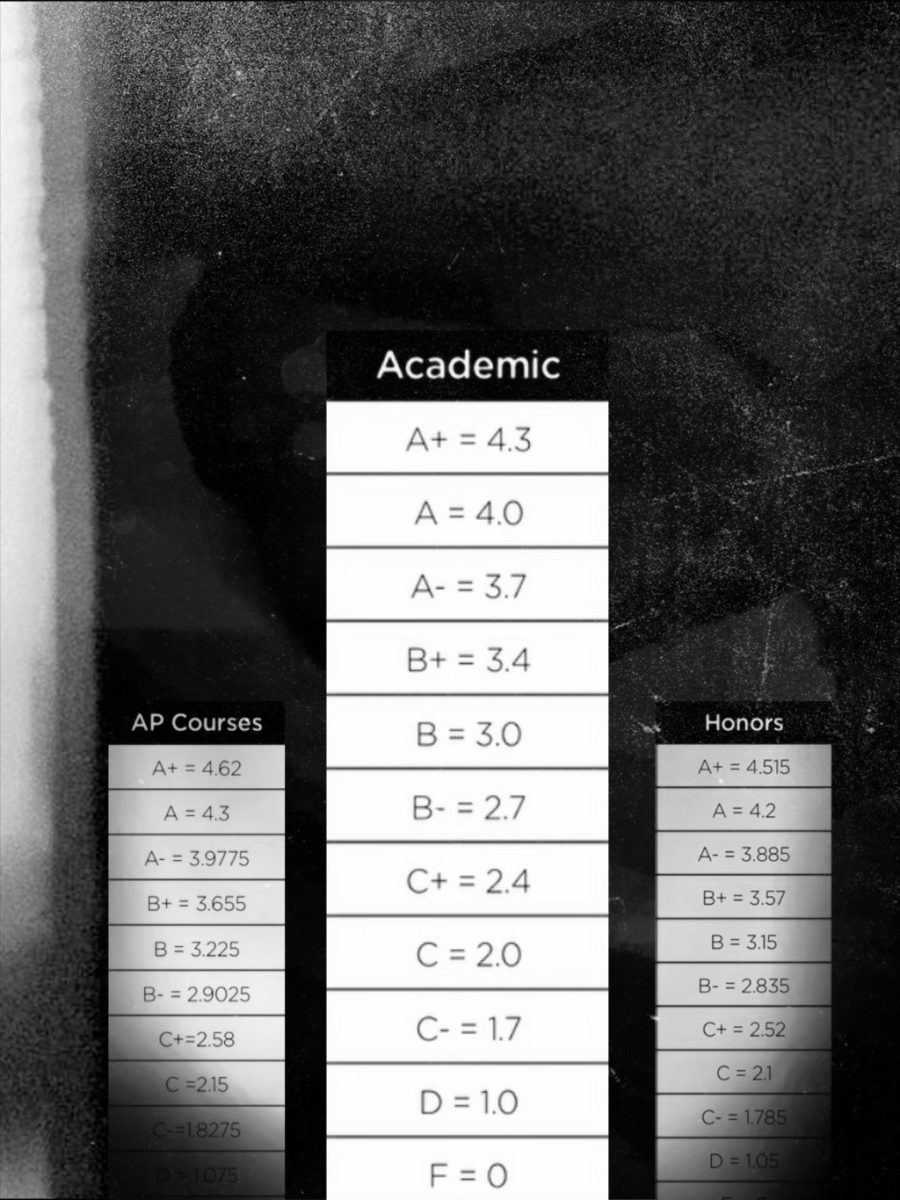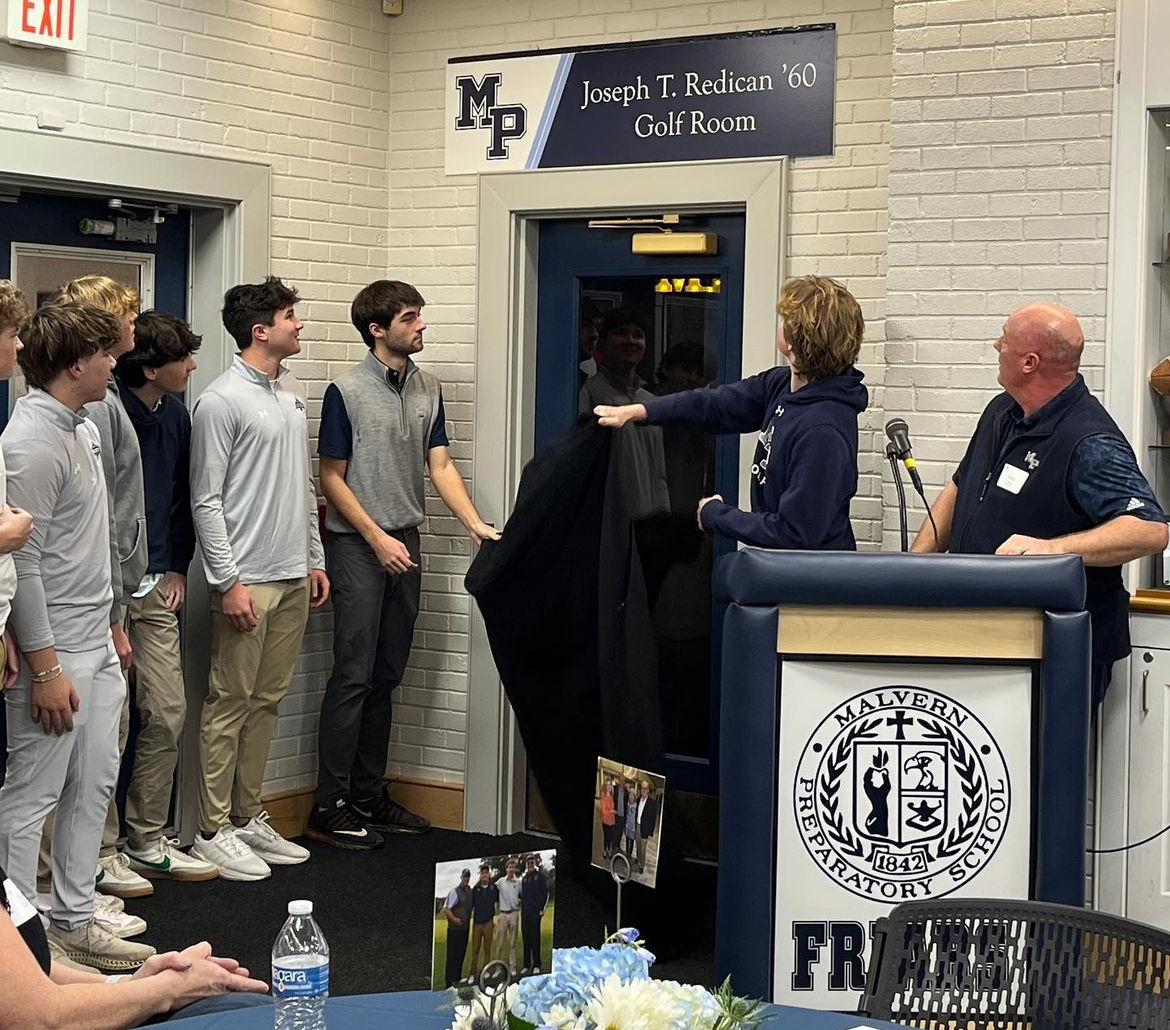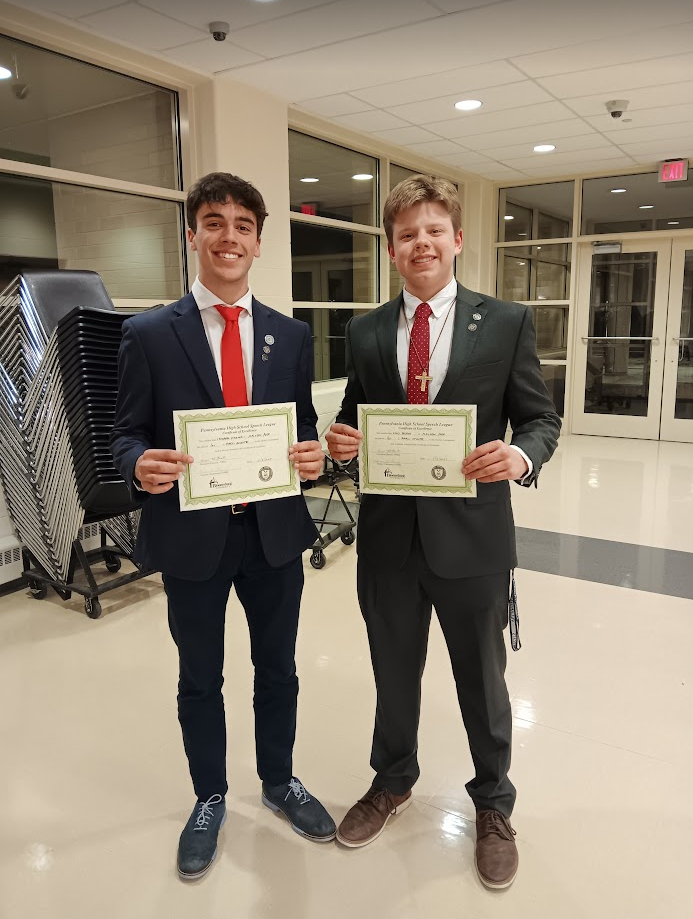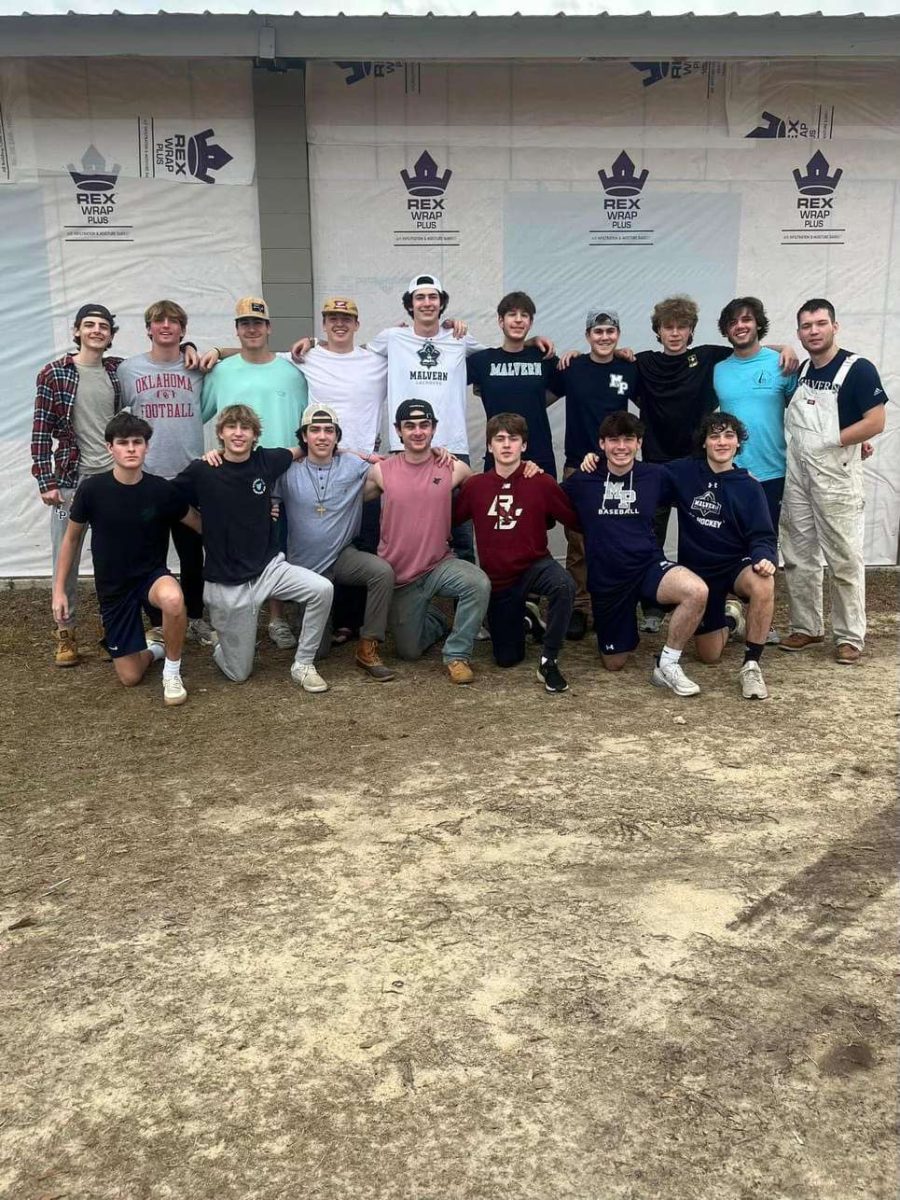Maintenance staff, teachers, and students share perspectives on Malvern’s graffiti.
Daniel Malloy ’18, Jadon Diehl ‘17, Ryan Maher ‘19
When you walk into the bathroom on the bottom floor of Carney Hall, it looks ordinary – until you enter the stalls. Inappropriate and vulgar drawings are etched on the plastic dividers.
Junior Mike Castaldi has seen other students vandalize school property but said he has never drawn graffiti himself.
“I have seen other kids draw stuff on desks. I also see graffiti in bathroom stalls, especially in Carney Hall,” he said. “The stalls are covered with different pictures and words.”
Social Studies Department Leader and AP Government teacher Mrs. Harriet Lappas has seen graffiti in her room, located on the bottom floor of Carney Hall. She recalls occasions where students in her classroom were drawing on the school’s desks and sometimes the walls.
“If I caught them drawing on the desks, they would have to clean it up,” Lappas said. “It’s hard to completely stop it. I had desks get changed in my room because of graffiti on them.”
Castaldi explained that he recognizes the efforts of the maintenance team to remove the graffiti.
“It looks like the maintenance staff has tried to cover it up a bunch of times, but people still draw on the stalls,” Castaldi said.
Maintenance staff member Mr. Anthony Carini said that his team works hard to combat graffiti on campus, but it can be challenging. According to Carini, it is easy for students to vandalize something secretly with a permanent marker.
The maintenance team works to cover up the vandalized property by repainting bathroom stalls and classroom walls.
“For the graffiti found on the bathroom stalls, we usually have to sand the stall divider in order to cover-up the graffiti because the stalls are plastic,” Carini said. “That is why the stalls have scratches on them in the Carney bathrooms.”
If the graffiti causes enough damage, the school will end up totally replacing vandalized objects, costing both time and money.
“We work with [Dean of Students] Mr. Dougherty to try to stop students from graffiting,” Carini said. “But every time we re-paint the walls, buy new desks, or install new objects in the bathroom, they all just end up being vandalized soon after.”

Assistant Dean of Students and Theology teacher Mr. Richard Poce knows of at least one desk this year that had to be replaced because something was carved into it. The worst instance of graffiti he has seen is when a group of students drew on a friend’s car.
“They were required to pay for it, and they got a five [detentions] and five [demerits],” Poce said.
Although those students were caught, Poce noted that it is tough to catch students in the act. However, finding the graffiti is not as difficult.
“Somebody might see it in a bathroom, and they’ll report it to us,” Poce said. “[We find it] by word of mouth.”
Teachers will also catch students doodling on their desks or see the graffiti later. However, with more and more whiteboard desks and tables, the damage is less severe.
“There are a number of desks [on the second floor of Carney Hall] that you can write on because it is a [whiteboard desk],” Poce said. “I teach in a room where you can draw on the desks. I’ve been in there all year. They may put their name there, but I’ve never found anything in that room I would consider offensive.”
In terms of disciplinary action, Poce said that the degree of the punishment depends on the amount of malice involved within the graffiti.
“The average student simply just doodling on the desk is one thing,” Poce said. “If someone makes threats, or if there is racial overtones involved, the punishment is probably more extreme.”
In the Malvern Prep Student Handbook, vandalism is listed as one of the offenses that could receive penalty of suspension, conduct failure, or expulsion.
“Defacing school buildings, school property, and/or another student’s private property is considered vandalism and will not be tolerated,” the handbook states. “A student involved in vandalism will not only face severe penalties, but will have to make full restitution as well.”
Beyond Malvern, the penalties get more serious.
At many colleges and universities, vandalism to property may lead to sanctions or suspension from the college community. The University of Notre Dame’s student handbook lists vandalism as a violation that may “call into question a student’s continued full participation in the University community.”
Locally, the penalty for vandalism and graffiti in Philadelphia can include a $300 fine, community service, restitution, or replacing the object that was vandalized. Repeat offenses of vandalism may lead to up to 90 days of imprisonment, according to phila.gov.
DEFINING GRAFFITI
Why do people graffiti in the first place?
At Malvern Prep, many teachers are still trying to come up with an answer.
“I think that kids would draw on school property because they were either bored in class and had nothing better to do or because they are trying to be funny,” Lappas said.
Poce thinks that some students may draw graffiti out of malice. However, he agrees with Lappas that most do it out of boredom.
“Maybe they’re angry at a teacher, or maybe they do it to joke about a friend, and again there could be nothing overt or malicious about it,” he said. “Or it simply could be because they are bored.”
It sometimes may be difficult to determine whether graffiti is a form of art, or people trying to actually cause harm by vandalizing both public and private property.
Art Teacher Mr. Rob Muntz has painted and studied art for many years, and has taught students who consider graffiti an influence in their work.
“From an arts perspective, graffiti is somebody telling a story, or reacting so much to something that they need to make a note of it visually,” Muntz said.
According to the Museum of the City, graffiti has been around since the prehistoric era, when people used to draw on the walls of caves and rocks. But the sort of vandalism we know today as graffiti mainly started after World War II, when housing projects were built in urban areas. Developments did not allow for adequate space and parks, and separated lower income residents from economic opportunities and from city centers.
In areas where discrimination or adversity is part of daily life, some graffiti artists fight back with spray-paint and a permanent marker.
“I’ve always had a connection with it,” Muntz said. “When you have injustice, and you have people who don’t like their living situation, or people need to express themselves – this is when the graffiti comes out.”
“We are not always there at the same time to rebel or make our voices heard. So graffiti, in its dark way, makes that time available for everybody,” Muntz said.
Some drawings that are found on school property may seem simply thoughtless. However, Lappas recalls seeing inappropriate drawings such as swastikas on school desks and walls.
“It’s not funny to draw something like a swastika on school property,” Lappas said. “It’s not right to have inappropriate drawings on school property, because it represents the school the wrong way and many people take offense to these types of graffiti.”
In November 2016, police launched an investigation at Council Rock North High School in Bucks County after graffiti including swastikas, a homophobic slur, and references to President-elect Donald Trump were found scrawled in bathrooms, according to Philly.com.
According to Council Rock Superintendent Mr. Robert Fraser’s email to the school community, someone wrote “I Love Trump,” a derogatory comment about people who are gay, and drew three swastikas in a girls restroom. In a boys’ restroom, someone drew two swastikas directly onto a restroom stall.
“I do want to emphasize that these actions are likely the responsibility of a very small number of individuals whose actions should not damage the reputation of the larger group,” Fraser stated in his email.

ON THE DECLINE?
Poce said that graffiti has been on the decline since when he first started in his role seven years ago.
“It seems to be less reported this year. Hopefully, it comes from a higher level of awareness,” Poce said.
Lappas said that vandalism was worse when she just started to teach at Malvern Prep in 2010.
“There hasn’t been as much graffiti now,” Lappas said. “I think that the recent surge in technology has caused the decrease in graffiti, because students can go on their devices to get engaged in something, rather than drawing on desks or walls.”
Graffiti also may be moving from classrooms to locations that are more secluded or private.
Senior Bobby Mitchell had class in Lappas’s classroom. “I have seen some drawings on some desks in the room,” he said. “However, I have seen more drawings in bathroom right down the hall.
Mitchell said that there are all different types of drawings on the bathroom walls and stalls.
“Some of them are funny, but also, some of them are pretty inappropriate,” Mitchell said.
Castaldi has a different opinion on why graffiti may be on the decline at Malvern.
“I believe that the decrease in graffiti at Malvern is due to students becoming more mature. There is no point to graffiti on school property,” Castaldi said.
Poce agrees with Castaldi. Although vandalism may have declined over the past several years, students still need to be aware of the effect graffiti can have on the community.
“This is their school. It is respect,” Poce said. “It’s the level of what I call stewardship. If this is a place you take pride in, why would you want to desecrate it?”












